Place of origin India Used by Indian Armed Forces | In service 1994 (Prithvi I) | |
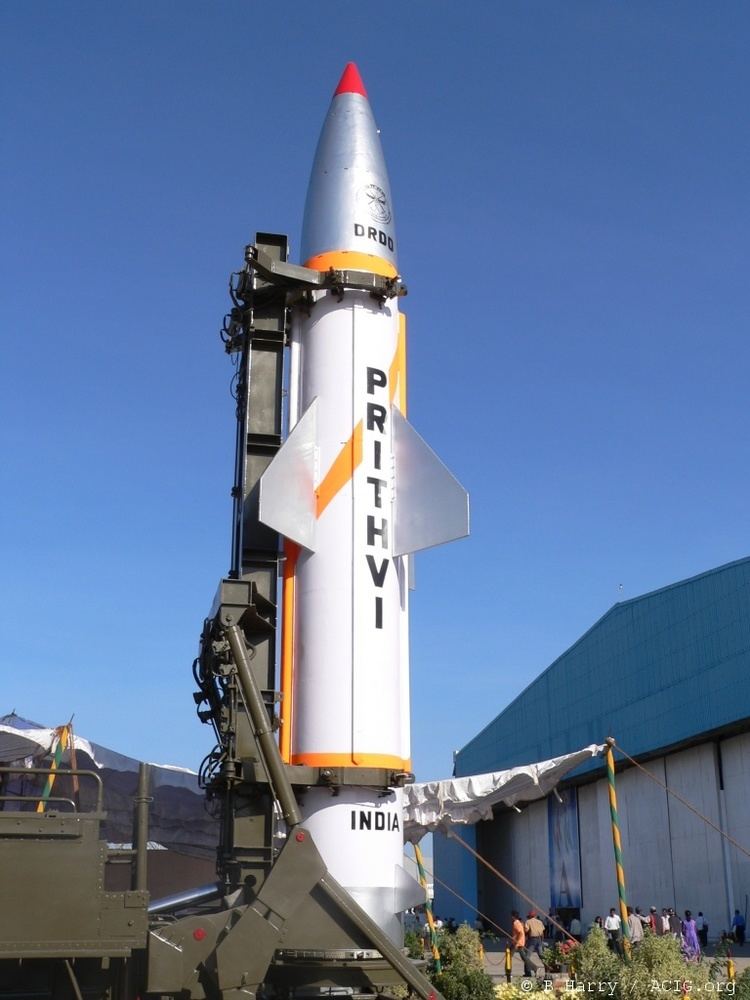 | ||
Produced February 25, 1988 (Prithvi I)January 27, 1996 (Prithvi II)January 23, 2004 (Prithvi III) | ||
Prithvi (Sanskrit: pṛthvī "Earth") is a tactical surface-to-surface short-range ballistic missile (SRBM) developed by DRDO of India under the Integrated Guided Missile Development Program (IGMDP). It is deployed by India's Strategic Forces Command.
Contents
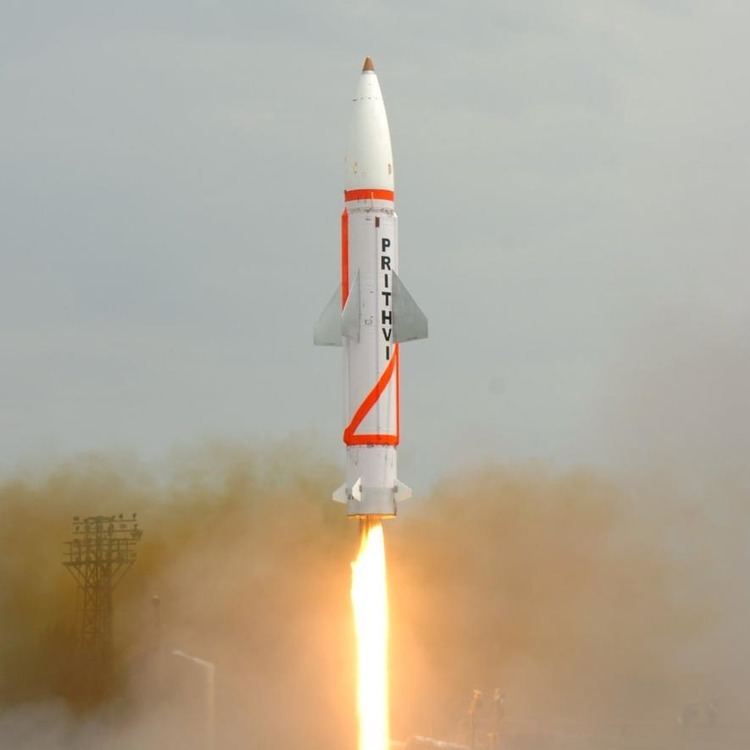
Development and history
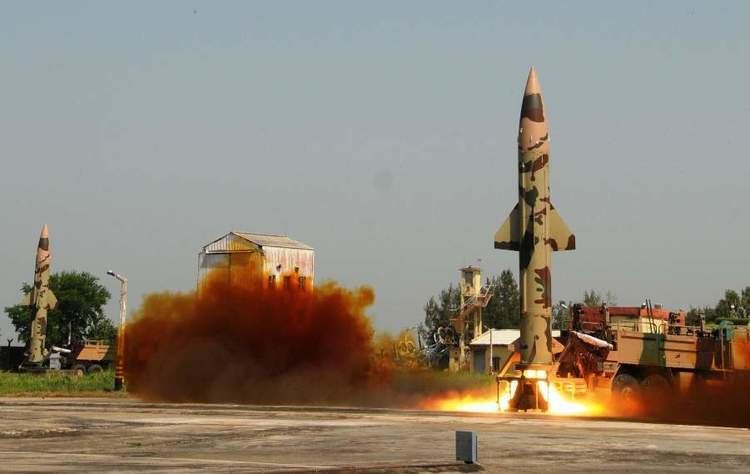
The Government of India launched the Integrated Guided Missile Development Program in 1983 to achieve self-sufficiency in the development and production of wide range of ballistic missiles, surface-to-air missiles etc. Prithvi was the first missile to be developed under the program. DRDO attempted to build a surface-to-air missile under Project Devil. Variants make use of either liquid or both liquid and solid fuels. Developed as a battlefield missile, it could carry a nuclear warhead in its role as a tactical nuclear weapon.
Variants
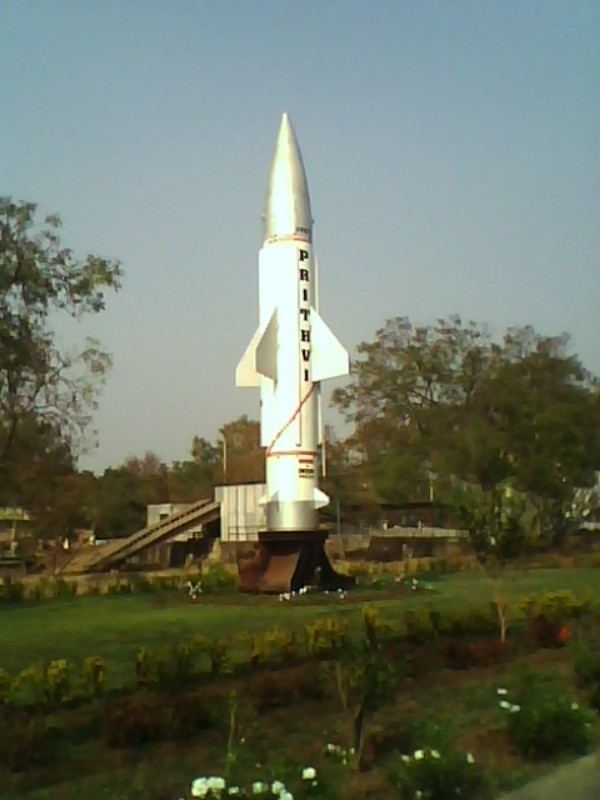
The Prithvi missile project encompassed developing three variants for use by the Indian Army, Indian Air Force and the Indian Navy. The initial project framework of the Integrated Guided Missile Development Program outlines the variants in the following manner.
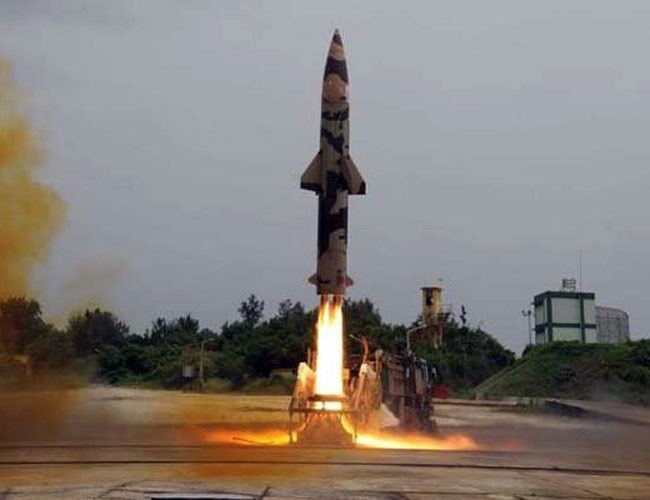
Prithvi I
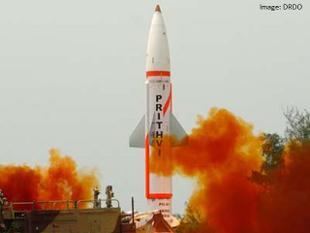
Prithvi I class is a surface-to-surface missile having a maximum warhead mounting capability of 1,000 kg, with a range of 150 km (93 mi). It has an accuracy of 10–50 m (33–164 ft) and can be launched from transporter erector launchers. This class of Prithvi missile was inducted into the Indian Army in 1994. As Per (DRDO) Chief Avinash Chander the tactical 150 km-range Prithvi missile will be replaced with the Prahaar missile, which is more capable and has more accuracy.” According to Chander, the Prithvi I missiles withdrawn from service would be upgraded to be used for longer ranges.
Prithvi II
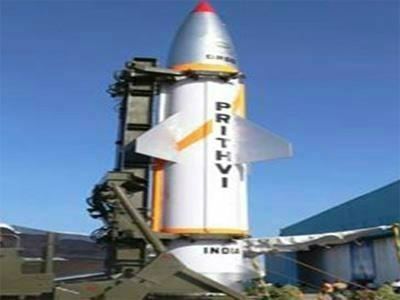
Prithvi II class is also a single-stage liquid-fueled missile having a maximum warhead mounting capability of 500 kg, but with an extended range of 250 km (160 mi). It was developed with the Indian Air Force being the primary user. It was first test-fired on 27 January 1996 and the development stages were completed in 2004. This variant has been inducted into the army as well. In a test, the missile was launched with an extended range of 350 km (220 mi) and had improved navigation due to an inertial navigation system. The missile features measures to deceive anti-ballistic missiles.
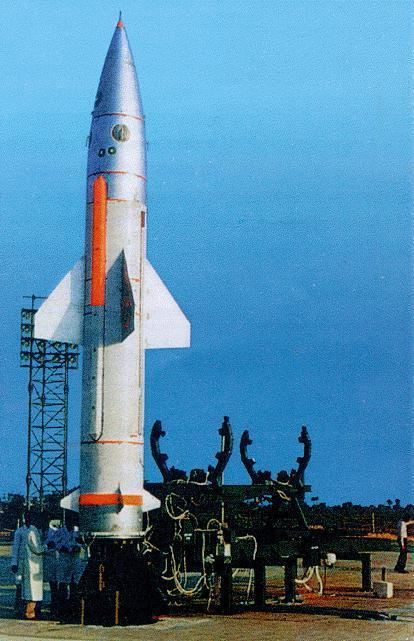
The missile was inducted into India's Strategic Forces Command in 2003, and it was the first missile developed under the IGMDP. After a failed test on 24 September 2010, two more missiles aimed at two different targets were launched on 22 December 2010 and were successful. According to news sources the range is now increased to 350 km (220 mi) and the payload capacity now ranges between 500 – 1000 kg.
Prithvi III
Prithvi III class is a two-stage surface-to-surface missile. The first stage is solid fueled with a 16 metric ton force (157 kN) thrust motor. The second stage is liquid-fueled. The missile can carry a 1,000 kg warhead to a distance of 350 km (220 mi) and a 500 kg warhead to a distance of 600 km (370 mi) and a 250 kg warhead up to a distance of 750 km (470 mi). Dhanush is a system consisting of a stabilization platform and the missile. It is a customized version of the Prithvi and is certified for sea worthiness. Dhanush has to be launched from a hydraulically stabilized launch pad. Its low range acts against it and thus it is seen as a weapon either to be used to destroy an aircraft carrier or an enemy port. The missile has been tested from surface ships of the navy many times.
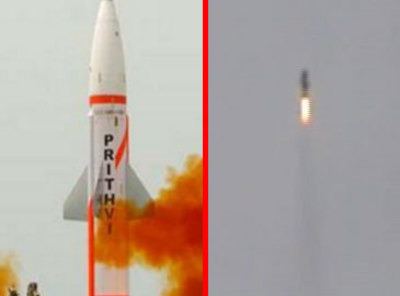
Prithvi III was first tested in 2000 from INS Subhadra, a Sukanya-class patrol vessel. The missile was launched from the updated reinforced helicopter deck of the vessel. The first flight test of the 250 km (160 mi) variant was only partially successful. The full operational testing was completed in 2004. The following year in December, an enhanced 350 km version of the missile, the Danush was tested from INS Rajput and successfully hit a land-based target. The missile was again successfully tested-fired from INS Subhadra, which was anchored about 35 km (22 mi) offshore from the Integrated Test Range at Chandipur on December 13, 2009. It was the sixth test of the missile. Prithvi III or Dhanush was again tested on November 26, 2015 from INS Subhadra in the Bay of Bengal.
